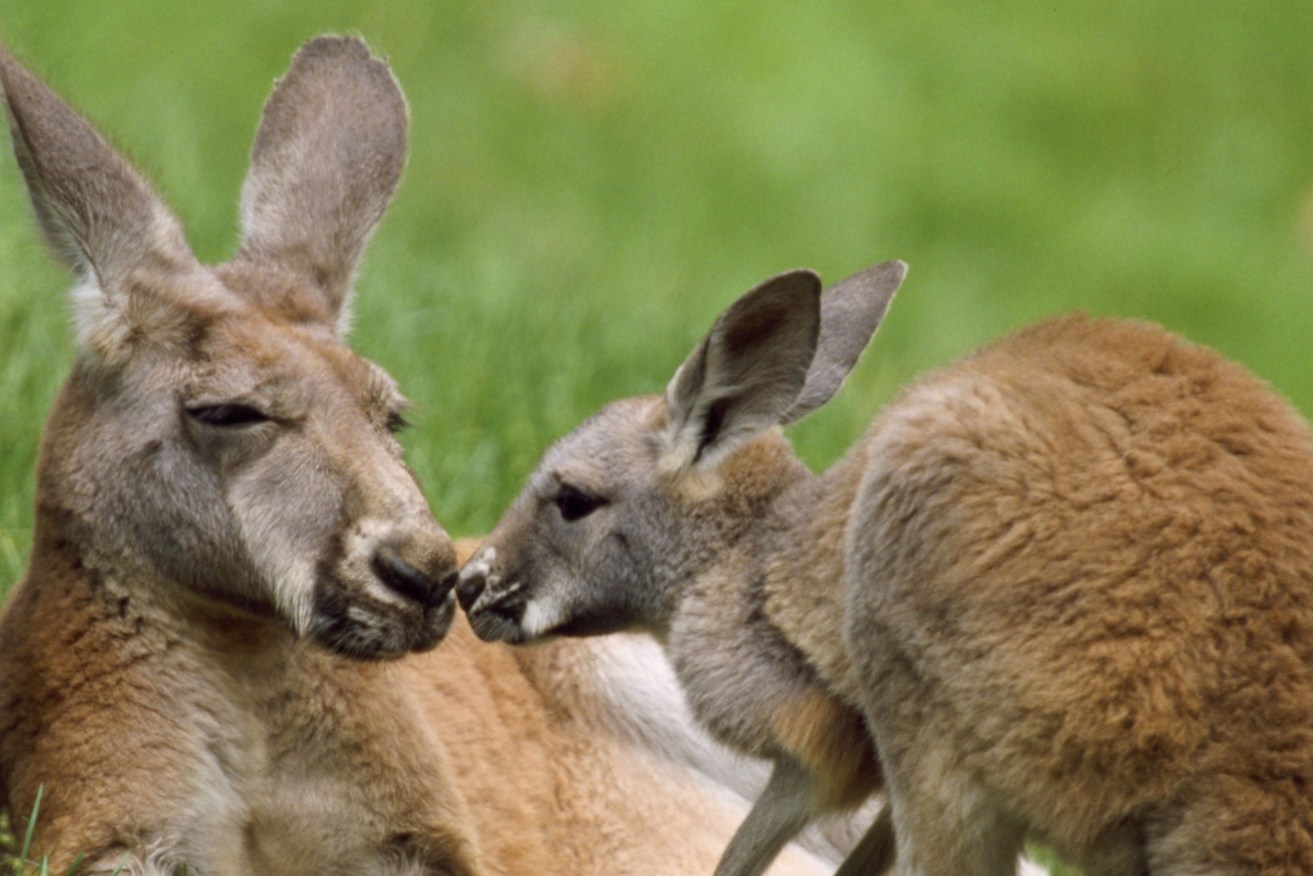SA kangaroo kill quota jumps by 200,000
As stranded kangaroos are rescued from floodwaters along the River Murray, the state’s annual commercial shooting quota has bounded ahead this year by 39 per cent to 576,300.


Red Kangaroo - female with offspring (Macropus rufus) Date:
The 2023 quotas for “harvesting” kangaroos, euros and wallabies reflect an increase of kangaroo numbers across the state of about 1.1 million, according to Environment Department Conservation and Wildlife director Lisien Loan.
The quota includes a more than 500 per cent increase in the number of Tamar Wallabies allowed to be taken on Kangaroo Island.
The state’s Commercial Kangaroo Harvest 2023 Quota Report shows an estimated 1.6 million red kangaroos across South Australia, with western grey numbers rising 50 per cent in a year to 1.1 million.
Rising statewide survey figures have led to new areas being opened up to commercial harvesters in the past two years including the Adelaide Hills, Fleurieu Peninsula and Kangaroo Island.
Loan said kangaroos and wallabies are highly adapted to the state’s boom and bust climate cycles, and when food is plentiful the native animals will be “breeding and breeding”.
“Kangaroo numbers have increased from the low levels we had over several years with drought,” she said.
The state’s commercial kangaroo harvest report shows that in the Adelaide Hills and Fleurieu Peninsula there are now an estimated 9.8 western grey kangaroos per square kilometre, or 66,846 in that region.
Kangaroos are protected under the Parks and Wildlife Act and it is illegal for the animals to be hunted recreationally.
The commercial harvest quotas are a top-level threshold. Last year, the state’s about 60 commercial harvesters killing kangaroos, euros and wallabies for human or pet meat were projected to have harvested 23 per cent, or 96,083 kangaroos, of the figure allowed by the department.
Loan said the commercial permits along with other permits for killing animals under land management rules for farmer were carefully set, with strict codes of practice and based on population data collected over the past 40 years.
She said if numbers get too high the kangaroos and wallabies can threaten other animals and plant species, with Sheoak trees vital to the survival of the Glossy Black Cockatoo particularly vulnerable to kangaroo grazing.
Last year, kangaroos were commercially harvested on Kangaroo Island for the first time, with the report saying this led to “small numbers of both Tammar Wallabies and Western Grey Kangaroos harvested from the island to date”.
Kangaroo Island, the Adelaide Hills and the Fleurieu Peninsula are included in the southern agricultural region figures that include the upper and lower South East, and this showed 78 Tammar Wallbies were harvested last year.
A quota for the western grey kangaroo this year is set at 10 per cent of its population that is now estimated to be 41,781 across the island.
The report said it was difficult to assess the Tamar Wallaby population on the island because the creatures are nocturnal.
Teams had used helicopter flights with thermal cameras, spotlight road surveys and drones to set a harvest quota estimated to be at five per cent of the population.
2023 quotas are now:
- Red kangaroo: a 33 per cent increase to 313,800
- Western grey kangaroo: a 39 per cent increase to 200,200
- Euro: a 26 per cent increase to 29,300
- Eastern grey kangaroo: a 100 per cent increase to 13,800
- Tammar wallaby: a 562 per cent increase to 19,200
Loan said the department had upped its survey techniques over the past year to include ground walking, helicopter, thermal imaging and drones to survey populations across South Australia between May and September 2022.
Amongst its findings is that red kangaroo numbers have grown around Marla and Oodnadatta in the state’s Far North. The region had been closed to commercial harvesting for two years over concerns about numbers, but has now reopened.




